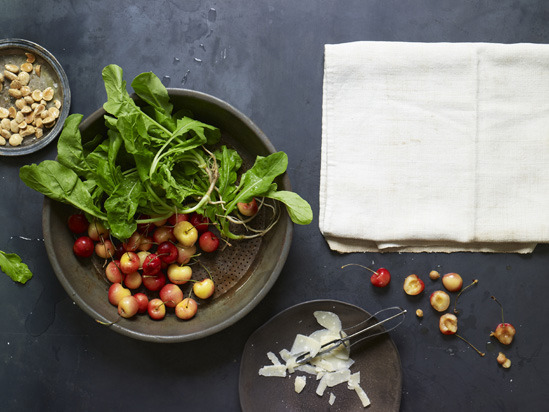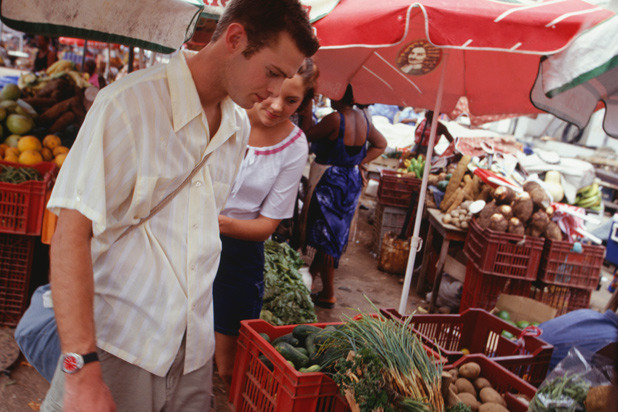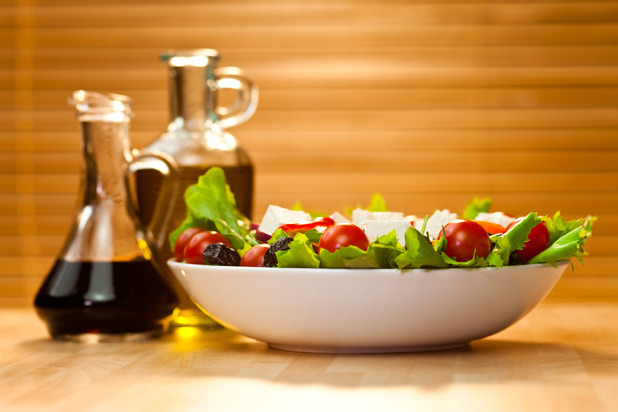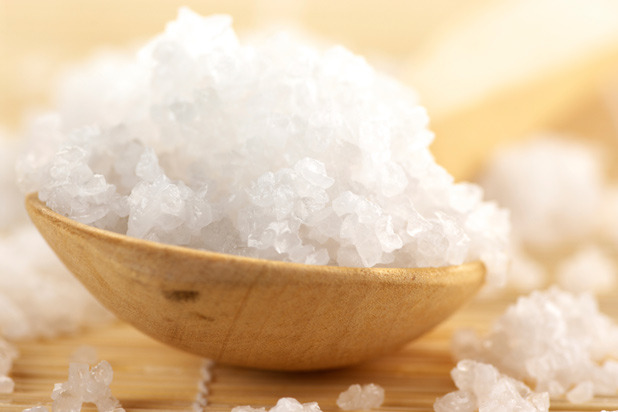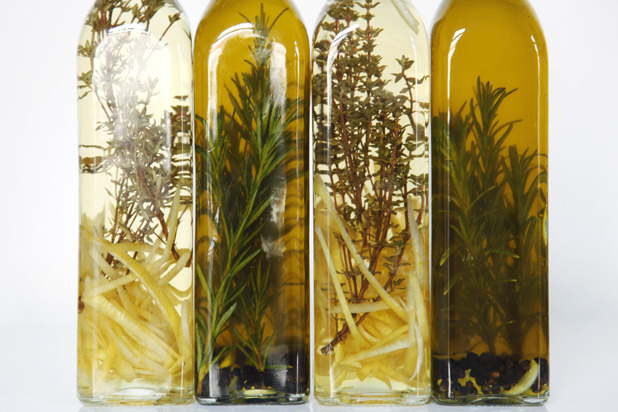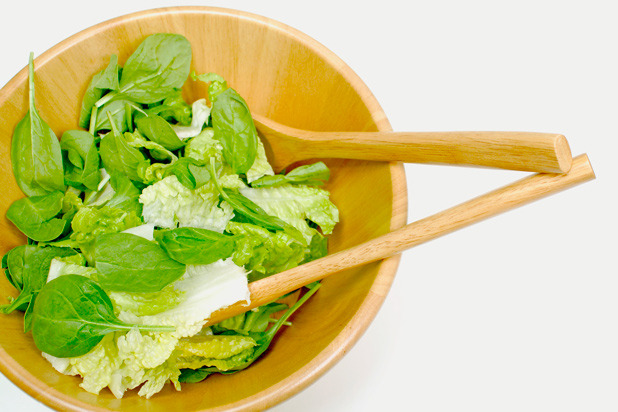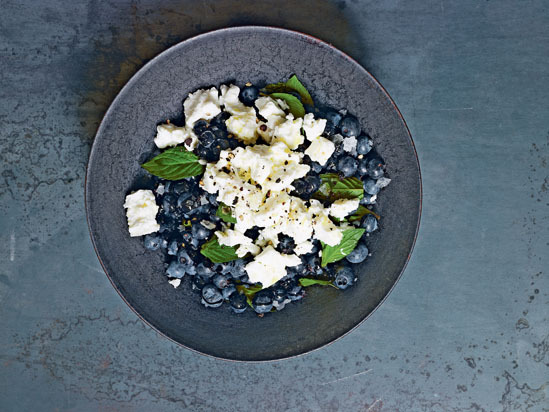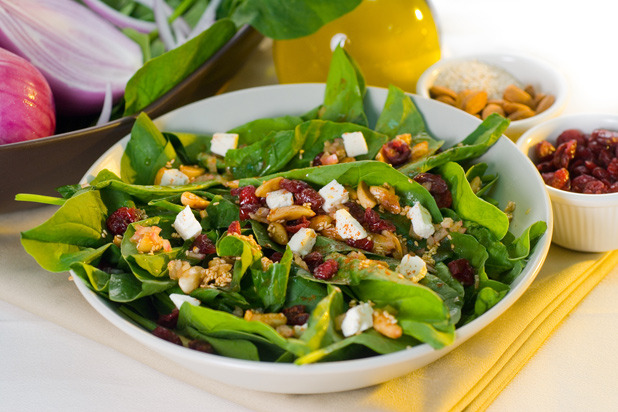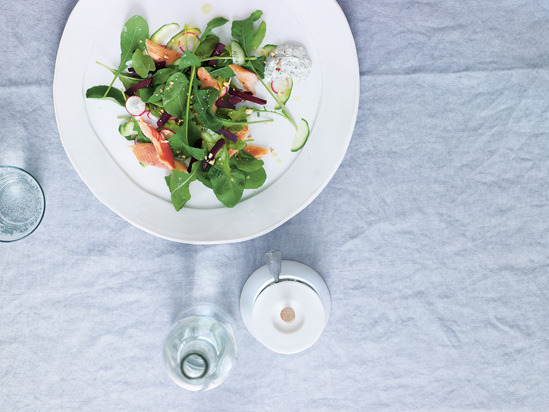Make Salads More Interesting Slideshow
Nuts, seeds, shaved celery or radishes, and snap peas or shell peas are just some of the ingredients that add crunch or pop to a salad.
Click here for the Arugula, Golden Cherries, and Marcona Almonds salad pictured at left.
2. Use the Freshest, Most Local Vegetables Possible
Stick to seasonal vegetables Great salads are about great vegetables and the sooner you use a vegetable after it's harvested, the more flavorful and bright tasting it will be. A sliced local tomato at the height of the late summer season, drizzled with good oil and sprinkled with great sea salt — perhaps with a drizzle of pesto or a sprinkling of mixed whole herb leaves and maybe some quick pickled shallot — is a simple knock-out salad. But the same thing in November is a bomb.
3. Go Natural
Drop bottled dressings, which contain sugars, high sodium levels and stabilizers — displeasing in both taste and texture. Instead keep a few nice extra-virgin olive oils on hand — I'm also a fan of pumpkin seed oil, which should be kept refrigerated — and a small collection of good vinegars to play with, or citrus fruit. Most of my impromptu nightly salads are dressed with a drizzle of good oil and a touch of vinegar or fresh lemon zest and juice.
4. Become Salt Savvy
I talk a lot about shopping for, using, and properly storing great salts in my book, Salads: Beyond the Bowl. There are so many great sea salts to choose from. Keep a small rotating stock on hand.
5. Creative Dressing Additions
Fresh herbs, shallots, capers, anchovies, honey, maple syrup, miso, saffron, yuzu, and even marmalade are great ingredients to incorporate into homemade dressings. Just remember to keep each individual dressing simple. Choose one interesting ingredient and work to highlight it.
6. Mixing Different Lettuces
I like to use a mix of lettuces: Frisée and spinach, or butterhead and any delicate micro greens are great together. When mixing greens, match up like textures. Otherwise, a hearty choice, like raw kale, will mask the flavor and texture of a delicate green, like mache.
7. Try Fruits in Salads
All fruits work great in salads. Again, here I let season be my guide. In the spring and summer, I use blueberries and stone fruit in salads, either letting these fruits drive a savory salad or be incorporated into one, such as plums. In my book, Salads: Beyond the Bowl, sliced plum is tossed with shredded roast rabbit, shaved celery, celery leaves, and smoked almonds. In fall, sliced apples or pears make their way into my shaved cabbage slaws, along with seeds, nuts, and currants.
Click here for the Blueberries, Feta, and Mint recipe.
8. Toast Seeds or Nuts?
I often toast nuts before using them to bring forth added flavor; not so much with seeds.
9. Proteins: Serve Hot or Cold?
Serve proteins with salad either just warm or at room temperature. When ingredients are cold, the flavors don't come forth as well.
Click here for the Smoked Trout Salad recipe pictured at left.
